I figured it was coming, but it wasn’t until just after I’d returned from the Audio Engineering Society’s 2016 International Conference on Headphone Technology1— held last August in Aalborg, Denmark—and was writing up my report and summary on the event for InnerFidel ity.com2 that I knew for sure: Headphones are about to change . . . a lot.

I’d like to take you on a little ride into the future of headphones, but first we’ll have to go back to the past, for some context. Until 1970 or so, headphones were mostly used in professional recording studios, audiology labs, broadcast studios, and the like. Consumers didn’t use them much. Stax’s first electrostatic ear speakers appeared in 1960, and slowly gathered a few fans among audiophiles, but that market niche was very small. In 1970, when Koss introduced the Pro4AA dynamic headphones, a few consumers began to take notice. I was one of them. With my paperroute money, I bought a pair of Pro4AAs in 1972, so I could listen to Pink Floyd at night as my little brother slept in the bunk above.
Then, in 1979, with the introduction of the Sony Walkman, consumers for the first time began using headphones in large numbers. Of course, their attention was mostly on the Walkman itself—headphones were mere accessories to that device. It would take something much bigger for headphones to become a viable product in the minds of most consumers.
By 1990, little had changed—headphones remained hung on the accessories rack, next to the cables and adapters. But headphones did begin to appear in high-end audio. In Stereophile, Corey Greenberg fawned over Grado’s nifty SR60 model ($69),3 and Stax’s pricey electrostatic headphones sold reasonably well among serious audiophiles who needed to keep the noise level down at night.4
This story is from the {{IssueName}} edition of {{MagazineName}}.
Start your 7-day Magzter GOLD free trial to access thousands of curated premium stories, and 9,000+ magazines and newspapers.
Already a subscriber ? Sign In
This story is from the {{IssueName}} edition of {{MagazineName}}.
Start your 7-day Magzter GOLD free trial to access thousands of curated premium stories, and 9,000+ magazines and newspapers.
Already a subscriber? Sign In
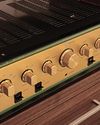
German kitchens, Japanese amps, and Afropop gems
BRILLIANT CORNERS - I have a day job at a museum. One of my favorite things about working there is taking the elevator from my office down to one of the floors open to the public; I walk into the galleries through a discreet panel in the wall. This makes me feel like I'm in one of those horror-movie manors with a tunnel concealed behind a bookshelf. Sometimes I startle people, which I kind of enjoy.

EDITOR'S PICK - RECORDING OF THE MONTH
The record business was awash in money and power. Vinyl LPs were still five bucks, and while the pressings could be suspect, the music-buying public still snapped them up en masse.
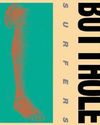
The Butthole Surfers wipe out
REVINYLIZATION - Music's lunatic fringe drifts further out every hour. As it should. In this century, with computers playing an ever-larger role, music continues to fragment and become infinitely more varied. This splintering is either the essence of what keeps it relevant as an art form or something profoundly disturbing, to be hated and feared.
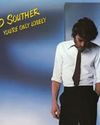
You're only lonely
AURAL ROBERT - The least surprising story in music today is the inevitable passing of irreplaceable talent. Tenor saxophonist Benny Golson died at age 95 the day I finished this salute to another fallen star, Southern California singer/songwriter John David \"JD\" Souther.
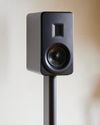
PS Audio Aspen FR5 - LOUDSPEAKER
I remember the first PS Audio product: a simple phono stage. It was so simple - a passive RIAA eq filter flanked by a pair of primitive op-amps - that when the schematic was made public, I built one myself; I was in the midst of my DIY years. I thought it was, to use a word from that time, nifty.
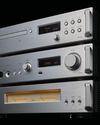
TEAC UD-701N - STREAMING PREAMP, D/A CONVERTER
In Gramophone Dreams #88, I described the sound of TEAC's VRDS-701T CD transport as \"dense and precise in a way I had never previously heard from digital.\" I went on to explain, \"by dense, I mean there was a tangible corporeality effected by seemingly infinite quantities of small, tightly packed molecules of musical information.\"
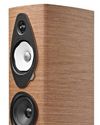
Sonus faber Sonetto V G2 - LOUDSPEAKER
Here's a hard truth: A written review of a full-sized speaker any speaker, really-is, at best, semi-useful. We all listen differently, we have different musical tastes, our system electronics are different, and our listening rooms vary a lot. You will gain a general picture of a speaker's capabilities and foibles from John Atkinson's measurements, and I can tell you how the speakers sound to me, in my room. But that's it. You need to hear them for yourself before making a buying decision. The best I can do is tell you how my music brain felt when the speakers were in my house and making music.
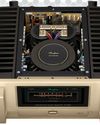
STEREOPHILE'S 33RD ANNUAL - PRODUCT OF THE YEAR AWARD 2024
When Stereophile's Product of the Year Awards were first published, in 1992, we decided that unlike some other publications and their awards schemes, we would keep the number of categories to a minimum. That way, we would avoid what the late Art Dudley once described as the \"every child in the class gets a prize\" syndrome.
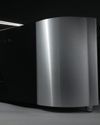
Moon 861 - POWER AMPLIFIER
It is unusual to begin a review with a detailed discussion of setup. But setup protocol for the Moon 861 power amplifier ($22,000 each), the top-level amplifier in the North Collection from Moon, which I reviewed bridged in mono, proved crucial to its sound.
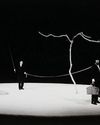
Mobile Fidelity, PrimaLuna, and First Watt redux
GRAMOPHONE DREAMS - It's important for readers to remember that I've spent my adult life as an artist and mechanic. Making things. Working as a tradesperson during the day then at an easel or workbench at night.